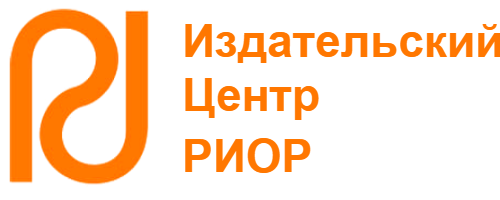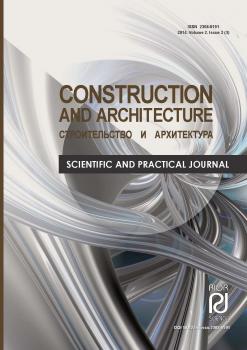Rostov-na-Donu, Rostov-on-Don, Russian Federation
Rostov-na-Donu, Rostov-on-Don, Russian Federation
Rostov-on-Don, Rostov-on-Don, Russian Federation
Rostov-na-Donu, Rostov-on-Don, Russian Federation
from 01.01.2017 until now
stanica Leningradskaya, Krasnodar, Russian Federation
Rostov-na-Donu, Rostov-on-Don, Russian Federation
UDC 69
CSCSTI 67.09
CSCSTI 67.01
Russian Classification of Professions by Education 08.06.01
Russian Library and Bibliographic Classification 38
Russian Library and Bibliographic Classification 308
BISAC TEC005000 Construction / General
The analysis of the influence of ultraviolet irradiation of building sand, which is a filler in a concrete mixture, on the dependence of the strength of concrete on the content of filler is carried out. With an increase in the content of sand due to the hydrophilicity of the surface of its particles in the mixture, the amount of free water required for the hydration of cement and the formation of cement stone decreases. Along with a decrease in the content of binder cement, this factor is an additional reason for a decrease in the strength of concrete with an increase in the content of sand. Ultraviolet irradiation leads to dehydration of the surface of the sand particles and the appearance of hydrophobic centers. As the hydrophobicity of the sand in the concrete mix increases, the content of free water available for cement hydration increases, and the strength of the cement stone increases. The change in the hydrophobicity of the surface of sand particles depending on the time of irradiation is non-monotonic. Therefore, there is an optimal UV activation mode that provides the greatest increase in concrete strength.
ultraviolet irradiation, particle surface, concrete mix, concrete strength
1. Zarembo V.I. Ispol'zovanie slabyh impul'sov elektricheskogo toka v tehnologii izgotovleniya betonnyh i zhelezobetonnyh izdeliy i sooruzheniy: Ch.1 [The use of weak pulses of electric current in the technology of manufacturing concrete and reinforced concrete products and structures: Part 1]. Stroitel'nye materialy, oborudovanie, tehnologii XXI veka [Building materials, equipment, technologies of the XXI century]. 2004, I. 10, pp. 58-59.
2. Torlina E.A. Elektromagnitnaya aktivaciya cementnogo testa i penobetonnoy smesi [Electromagnetic activation of cement paste and foam concrete mixture]. Vestnik MGSU [MGSU Bulletin]. 2012, I. 12, pp.149-153.
3. Pavlov A. N. Prochnost' penobetona pri vozdeystvii peremennogo elektricheskogo polya [Strength of foam concrete when exposed to an alternating electric field]. Nauchnoe obozrenie [Scientific Review]. 2015, I. 10, pp. 147-150.
4. Sudarev E.A. Intensifikaciya processov gidratacii i tverdeniya cementa pri mehanohimicheskoy i himicheskoy aktivacii: dis. … kand.tehn. nauk [Intensification of the processes of hydration and hardening of cement during mechanochemical and chemical activation: dis. ... Cand. tech. sciences]. Tomsk: FGBOU VPO «NI TPU» [FSBEI HPE "NR TPU"]. 2012. 188 p.
5. Shuyskiy A.I. Optimizaciya sostavov vyazhuschih kompoziciy na osnove domennogo shlaka i superplastifikatora, aktivirovannyh scheloch'yu [Optimization of binder compositions based on blast-furnace slag and superplasticizer, activated with alkali]. Nauchnoe obozrenie [Scientific review]. 2016, I. 16, pp. 22-28.
6. Shcherban' E.M. Effektivnost' elektrofizicheskoy aktivacii penobetonnyh smesey [Efficiency of electrophysical activation of foam concrete mixtures]. Inzhenernyy vestnik Dona [Engineering journal of Don]. 2013, I. 4 URL: http://www.ivdon.ru/ru/magazine/archive/n4y2013/2193.
7. Ye Yu. Deep-ultraviolet Smith-Purcell radiation / Yu Ye, Fang Liu, Mengxuan Wang, Lixuan Tai, Kaiyu Cui, Xue Feng, Wei Zhang, and Yidong Huang // (2019) OSA Publishing 6 (5), pp. 592-597. DOI:https://doi.org/10.1364/OPTICA.6.000592.
8. König S. Ultraviolet extrapolations in finite oscillator bases / S. König, S.K. Bogner, R.J. Furnstahl, S.N. More, T. Papenbrock // (2014) Phys. Rev. C 90, 064007. DOI:https://doi.org/10.1103/PhysRevC.90.064007.
9. Cho Hee-Taek. Ultraviolet Light Sensor Based on an Azobenzene-polymer-capped Optical-fiber End / Hee-Taek Cho, Gyeong-Seo Seo, Ok-Rak Lim, Woojin Shin, Hee-Jin Jang, and Tae-Jung Ahn // (2018) OSA Publishing 2 (4), pp. 303-307. DOI:https://doi.org/10.1364/COPP.2.000303.
10. Srivastava Abhishek. Utilization of alternative sand for preparation of sustainable mortar: A review / Abhishek Srivastava, S.K. Singh // (2020) Journal of Cleaner Production 253, 119706. DOI:https://doi.org/10.1016/j.jclepro.2019.119706.
11. Lukash E.A. Povyshenie effektivnosti betonov za schet modificirovaniya poverhnosti napolniteley iz tehnogennogo syr'ya KMA: dis.… kand.tehn. nauk [Improving the efficiency of concretes by modifying the surface of fillers from technogenic raw materials KMA: dis ... Cand. of Eng. sciences]. Belgorod: BGTU im. V.G. Shukhova [BSTU named after V.G. Shukhov]. 2008. 178 p.
12. Yadykina V.V. Upravlenie processami formirovaniya i kachestvom stroitel'nyh kompozitov s uchetom sostoyaniya poverhnosti dispersnogo syr'ya [Management of the formation processes and the quality of building composites taking into account the state of the surface of dispersed raw materials]. M: Izd. ASV [ASV Publishing House]. 2009. 374 p.
13. Ayler R. Himiya kremnezema. Ch.1 [Silica chemistry. Part 1]. M.: Mir. 1982. 712 p.
14. Kiselev A.V., Lygin V.I. Infrakrasnye spektry poverhnostnyh soedineniy [Infrared spectra of surface compounds]. M.: Nauka [Science]. 1972. 459 p.
15. Chukin G.D. Himiya poverhnosti i stroenie dispersnogo kremnezema [Surface chemistry and structure of dispersed silica]. M.: Paladin, OOO Printa [Paladin Printa LLC]. 2008. 172 p.



















